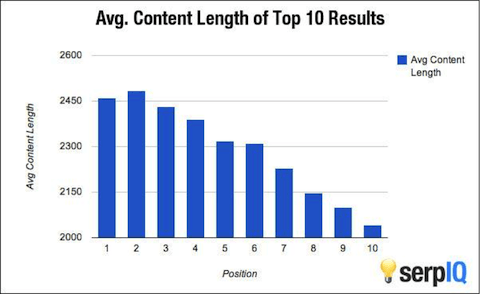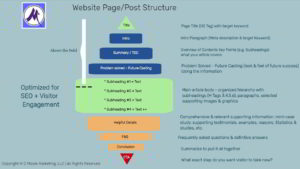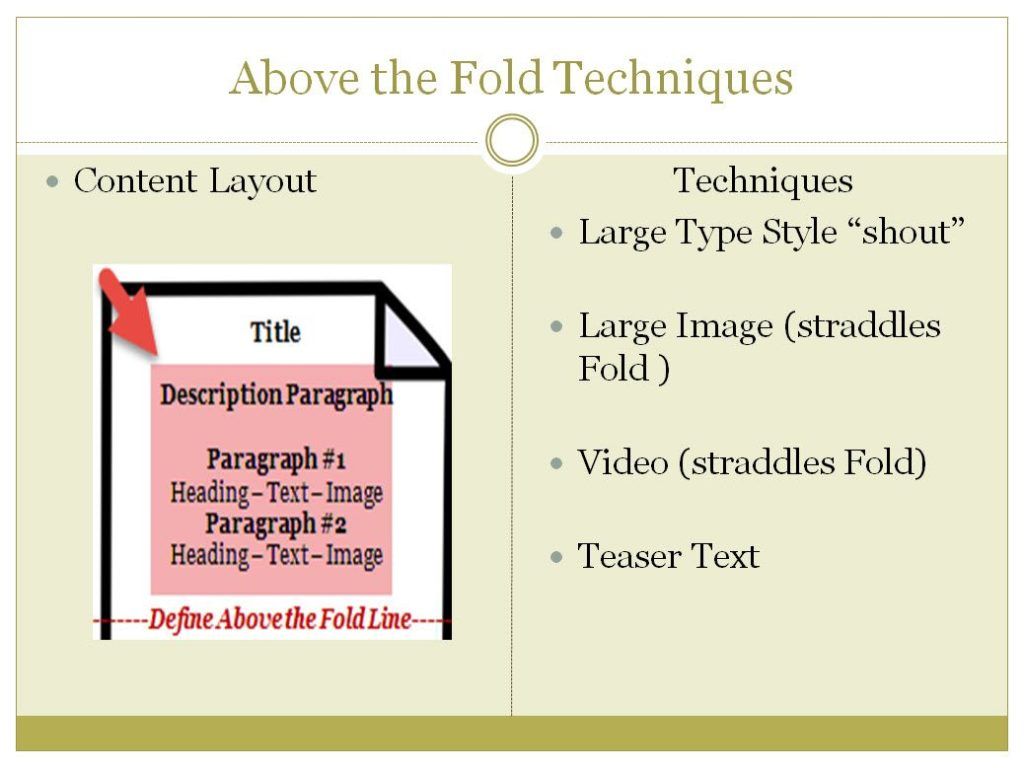Content Marketing Strategies for Local Business
Content marketing strategies form a core position in the execution of digital marketing strategies for small and mid-size local business organizations. To understand “content marketing strategies” and their place in the small bushiness marketing plans, it requires a clear definition and the following guide for local business content marketing covers the basics..
There are a number of details that are applied to creating content for both business websites and social media, the following broadly represent the three key aspects.
-
- Must address a need, concern or opportunity of direct interest to the target market being pursued
- Must address a need, concern or opportunity of direct interest to the target market being pursued
-
- In final form, must include both on page SEO optimization and local SEO techniques
-
- The article needs to be unique and grow out of the knowledge and expertise of the business owner and staff and include quotes and additional information “curated” from other authorities in the field.
- The article needs to be unique and grow out of the knowledge and expertise of the business owner and staff and include quotes and additional information “curated” from other authorities in the field.
Learn How Wikipedia Describes Content Marketing
Wikipedia defines “content marketing” as…
Content marketing is a form of marketing focused on creating, publishing and distributing content for a targeted audience online. It is often used by businesses in order to:
- Attract attention and generate leads
- Expand their customer base
- Generate or Increase online sales
- Increase brand awareness or credibility
- Engage an online community of users
Content marketing means attracting and transforming prospects into customers by creating and sharing valuable free content. The purpose of content marketing is to help the company to create sustainable brand loyalty and provide valuable information to consumers, as well as create willingness to purchase products from the company in the future. This relatively new form of marketing usually does not involve direct sales. Instead, it builds trust and rapport with the audience.
With this understanding of the basic tenets, let’s look next on why creating articles and other Blog types makes such a difference to local company online marketing success including techniques for local SEO type content. Here are 4 basic reasons;
- Content that is SEO optimized helps to get the website ranked higher in the SERPs. The higher the Ranking the more organic (free) traffic
- Quality content builds local business brand awareness and establishes the owners authority
- Content focused on customer needs and issues will add subscribers, followers and promote sharing
- Content is used to discuss an opportunity or issue and then linked to product or service offers
What do the marketing statistics tell the local small and mid-size business about the importance of Content Marketing?
Learn more
Content Relevance to Social Media Marketing
Quality content is as important to social media promotion as for business websites. There are any number of content types and certain content is more suitable than others for different industries. This chart from Convince & Convert gives you a solid over-view of this point.
Source: Convince & Convert / by Jay Baer
As you can see, this chart indicates the importance of exploring the various “types of” Blog content as part of your marketing research and plan.
What consumers have to say about Content Marketing?
- 80% of decision makers prefer to get company information in a series of articles rather than from an ad (Source: Bop Design / Significant Web design Statistics)
- 81% of U.S. online consumers trust information and advice from blogs
- Small businesses that blog get 126% more lead growth than small businesses that do not blog.
(Source: http://writtent.com/blog/top-blogging-statistics-45-reasons-to-blog/
6 Basic Content Development Steps
1. The first step as part of a complete local business digital marketing plan is to establish a content plan and editorial calendar. This step outlines what type of content will best serve the target customers, a list of the most important general topics to be covered. This is developed from the business owners knowledge of what questions, concerns, issues and opportunities are most important to their target customers.
2. The editorial calendar will layout a daily, weekly and monthly schedule as to how much content needs to be created and when it will be published. This Editorial Calendar includes both business website articles and social media posting.
3. A content research process is established to quickly and effectively develop ideas, resources, curated content from industry experts and trends and topics
4. Content topic ideas are listed and integrated into the Editorial calendar. This sets out a timetable for when to complete topic research and begin drafting the content.
5. Using Blog Type templates, readily available on line for the various types of content, a draft of each article is begun. The first step is to list the Topic, purpose and outline of key points to be covered. Next, the author writes out their ideas, thoughts and opinions on each key point. This is followed by adding relevant excerpts from the website’s of identified (non-competitor) authorities on the topic being covers. Proper attribution should be included for any direct quotes or curation of sections of relevant supporting content.As a general rule of thumb, 60 – 70+% of any website article should be the writers unique content.
6. Once the first draft is completed, edit are made, headings added, images directly reflecting the intent and purpose are selected and a revised draft created.
Importance of Website Content Length
Using quality and targeted content to attract visitors and increase website article ranking is directly affected by the length of articles. Search engines disdain short articles as not having value or not really covering the topic. WE recommend to our clients that when creating long-form articles, the strive to be at least 2,000 words in length.
According to Copy Press.com, “2416 Words: The Average Word Count of Top Ranked Searches”
Go ahead, tell your writers [or small business clients] that 500 words aren’t enough and you want them to crank out 2,000 word blog posts from now on!.
Longer articles are typically well-researched with plenty of data to back them up. They serve as credible sources to journalists and bloggers that link back to the article as a source. Learn more >Here
The following, from SerpIQ has been often quoted by industry experts to highlight the importance of blog article length…
Our belief at M4 Digital Marketing is that this data does not tell the whole story of website content length. In a study by Tim Brown @timbdesignmpls,,if you as website visitors about their preference for website article length, over 50% prefer 700 – 1500 word length.
Our take is that “cornerstone articles”, important business website articles should be over 2,000 words in length but supplemental articles, particularly those related to or expanding on the cornerstone articles can be in that 700 – 1500 word range. It is the dilemma of satisfying the target visitor, which is the most important objective, and satisfying the ranking in the search engines…as in competition with other articles for a given search query.
Website Content & Keywords
Each article’s topic should be focused around keywords and phrases already identified in support of the local business purpose. The keyword research, part of creating the digital marketing plan, will identify the 5 – 8 most relevant Keywords people include in a search for a given product or service.
These keywords should have enough search volume ( at least 500+ searches per month) and as low a competition as possible. When these 5 – 8 defining Keywords reflect when taken together define the business for the search engines. This is an SEO element critical to ranking articles and blog posts.
In addition to the 5 – 8 primary Keywords, each of those needs to have 15+ long-tail keywords reflective of each primary keyword. These are keyword phrases of 3 or more words that are more descriptive of how people actually search.
For example, a “primary keyword for a business might be “residential air conditioners” but people searching my enter “home air conditioners under $1,000”
These long-tail keywords are also critically important as a result of the growing impact of “voice search”. Today, more and more people are using voice search where they verbally ask for search results on their mobile phones or in the new home search tools like Amazon Echo, Google Home and others.
People do not speak like they type. When someone searches on line by typing their search query on a computer or table. The search term tends to be very direct. An example would be “pizza near me” . But when someone uses voice search, the search query is longer and more specific e.g., pizza near me with delivery.”
Learn more on Keyword Research
Frequency of Website Article Publishing
Probably the most telling recommendation for business website article content publishing is how frequently to produce content.
A recent study from HubSpot shows that B2B companies that publish 16-plus blog posts per month receive 3.5 times the amount of traffic as companies that publish only 0-4 posts per month. The story is similar for B2C companies: those that post 16-plus entries a month enjoy 4.5 times the amount of traffic as those that upload only 0-4 posts..
In our experience, this is a major concern for most local companies and puts off many as not being able to conceive of creating and publishing 11 – 16 articles a month. That is why our take on this question of publishing frequency is different. We believe that all of these monthly articles do not have to be 2,000+ word long-form content. If a local business can create one solid cornerstone article a week, that article can be re-purposed into other blog types, such as Infographics, Slide Decks and shorter form posts. In this manner one article is turned into 3 -4 making 11 – 16 a month very doable.
Website Blog Article Types
With the question of frequency of monthly article publishing in mind, it is instructive to describe the most effective Blog post Types. The following Blog Types are ideally suited to the small and mid-size local companies striving to create valuable visitor content, satisfy the search engines as to ranking .
- List Posts -creating a list post (whether with bullet points or numbered) get high marks for time on site, bounce rate and share-ability. This is likely because of the ease of reading as people tend to scan text. The fact that lists can have “headings” allows your content to create interest and engagement with the text.
- How To Posts – One key objective for building your “brand” through content marketing is to establish your organization and experts in your field and authorities on the article topics presented. A well-developed how-to-article “walks the reader” through a set of specific steps in solving a problem or utilizing a tool or procedure. A Title example could be “How to Manage A Business budget for Greater Profits.”
- Question & Answer Post –This post type is ideally suited to building your brands authority by engaging an established “Influencer” in a Q&A discussion. Once you have identified and established a networking relationship with an authority of influence within your market niche, you can reach out to them and with the request to include their views in a new Blog-post article.
- Personal Success Stories – To the extent your business and customer base are likely to have produced successes as a result of your products or services, research shows that people in the same market have positive views of success stories. Describing the details of a customer’s success with your products or services so readers can follow the before and after or steps in the process with a tangible outcome is the right approach.
- New Service or Product Announcement –The products or services you have developed and promote will be a valuable topic theme for a Blog-post article. This is of particular value when you are writing about an upcoming launch. This will be easy to develop because of your knowledge about the features or benefits of the new product or service, what problem or opportunity is being targeted and what went into the development and decision to bring the product/service to market.
- Target Market News or Important Trends – When there is important news or major trends uncovered in your industry that are of real interest to your target market niche, there is already buzz and news momentum to the topic area. Here are areas to look for or consider for this type of article:
- Breaking News affecting your market
- Events, Conferences, TV special coverage
- Changes in legal or regulatory aspects affecting your market
- News surrounding Top people or companies in your industry
The Standard Template for Website Article Content
The last part of our guide on local business content marketing is to look at a standard template model that highlights basic “on page SEO needed for website content. This website Page and Post content structure chart has been updated based on 2020 research into content length for local SEO.
Defining the terms for On-page SEO
Looking at the chart above, we define the terms as follows:
- TITLE represents the blog post of page Title that will show at the top of every page and be included in the URL for that page. The title should be no more than 160 characters and contain the target keyword or phrase early in the title.
- Each paragraph may contain a heading, text and images (if appropriate. The page content should be organized into “key points” with a heading for each cohesive section. The section HEADINGS, called H3 tags, need to contain at least one related keyword to the over-all topic and the content purpose for each section.
TITLE: 10 Ways to Use Yoga for Weight Loss
META DESCRIPTION: Yoga for weight loss methods that work. You can use Yoga effectively to shed those extra pounds. Here are 10 tips on using proven Yoga techniques to assist your weight loss efforts.
DESCRIPTION PARAGRAPH
The first paragraph, called the Meta description for SEO purposes, provides a preview of what the Blog-post is about in a way that both:
Further defines the topic clearly for the search engines
Grabs the interest and attention of the visitor and previews that their search will be answered by your content
If a section has sub-topic paragraphs, important sub-topics can have their own related Heading, referred to as H3, 4 5 or 6 Tags, depending on how many sub-sections the content may be divided into.
After all the text paragraphs and sections for the topic are completed, the next step is to create a “Concluding Paragraph” that summarizes and wraps the article up.
The last paragraph is a Call-To-Action (CTA) that specifically directs the reader as to what you want them to do next. An example might be a Link to another page or post on your website related to this article with link text such as “Read More about (topic) here”
Meta Descriptions
The term “Meta” is an SEO term that refers to the primary means by which the search engines come to understand what your article content is about. It is your chance to tell them “this is what this content is about.”
The page Title is the “Metal Title” and the very first paragraph is intended as the “Meta Description.” Your target Keyword for the article should be used once in the Meta Description as early in the first sentence as possible.
Content Engagement Techniques
The last important aspect of the basic content template is to understand the concept of “above & below the fold”. Our job is to create as unique, purposeful and interesting content as possible to keep the reader engaged and review all your article.
People have very short attention spans. Not only must we grab their attention early but keep it as the read, or more likely scan, the page to find what interests them or answers their search query purpose.
The techniques of engagement are many but none more important than at the above and below the fold position.
The “fold” is that point on the screen being used to view your content, such as a computer of tablet size screen (mobile screens and content are a separate subject), where the person viewing the content would have to SCROLL down to see more.
This natural point of scroll is the most likely place to lose the viewers engagement. It is therefore critical to use some of the engagement techniques commonly effective is motivating the viewer to scroll down.
Here are several valuable and simple “engagement techniques”:
Larger Type and Color technique placed right above the natural Fold>
(place in large type” Read the exciting steps below”
Relevant Image, that supports your article purpose, that straddles the “FOLD” causing the reader to scroll on to see the complete image (note that is this article you are reading, we have positioned an image on the fold).
A short Video can be used in the same way as the image. You can select a relevant video from YouTube and place it on the fold.
Teaser text as the last sentence of the paragraph right above the fold.
Content Creation 10 Step Procedure for Local Digital Marketing
Small and mid-size local companies should not be reluctant of in any way put-off by the need to create website content. Using a basic content creation procedure, will in a short time, become almost second nature for a business owner or staff member. We use the same template format with our companM4 Digital Marketing and with our clients..
My most important suggestion, based on training and consulting my local business digital marketing clients, is to write s you would talk.
Local business website content creation is simply a matter of writing as if you were having a conversation with a customer. This is something a business owner does every day and all day. Have a conversation on your topic in writing!
- Select Category for Specific Campaign
- Choose Categories secondary keyword phrases for target topic
- Research topics for this Keyword relevant to supporting your article
- Chose over-all topic
- Start 1st Rough Draft
- Title placeholder.
- Out line your thoughts & ideas for this topic (think Personas)
- Research specific topics outline
- Find authority articles
- .Get any relevant quotes or passages from relevant content (save attribution info)
- Position any curated research in your Draft and add your ideas around curated content
- Add Headings (H2,3,4 etc.) using long-tail keyword phrases
- Draft Conclusion paragraph & CTA (related to campaign
- Review Draft for final edits & publishing
This wraps up our basic guide to local business content creation. The process is a learned activity. Using templates is an essential help to make this writing of article very easy. We recommend you copy the 10 Step Procedure above to create your template for basic website article creation.
Learn more about Local Business Digital Marketing >>>Here





